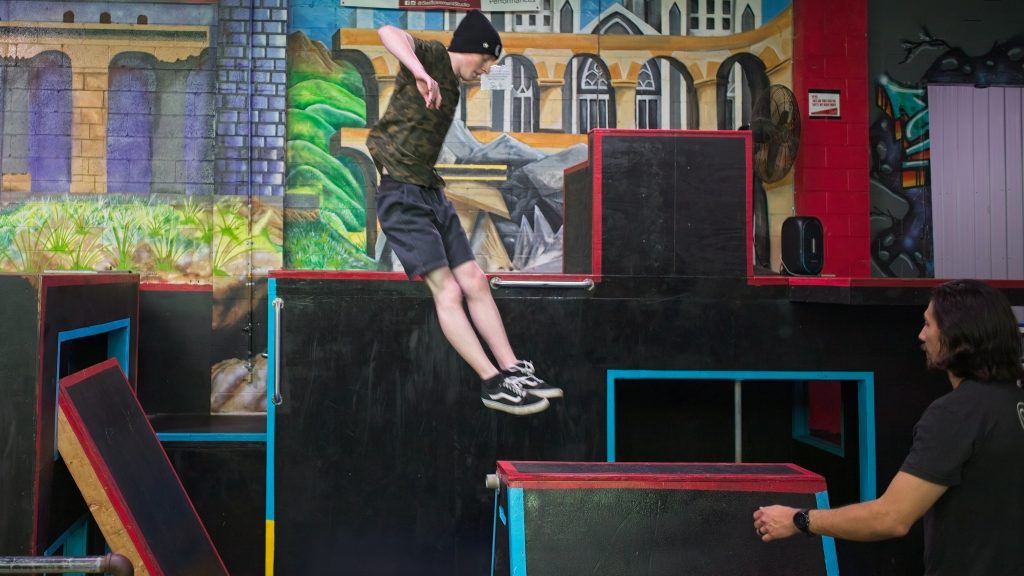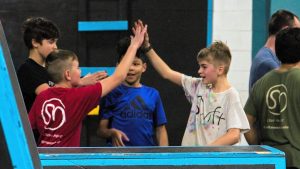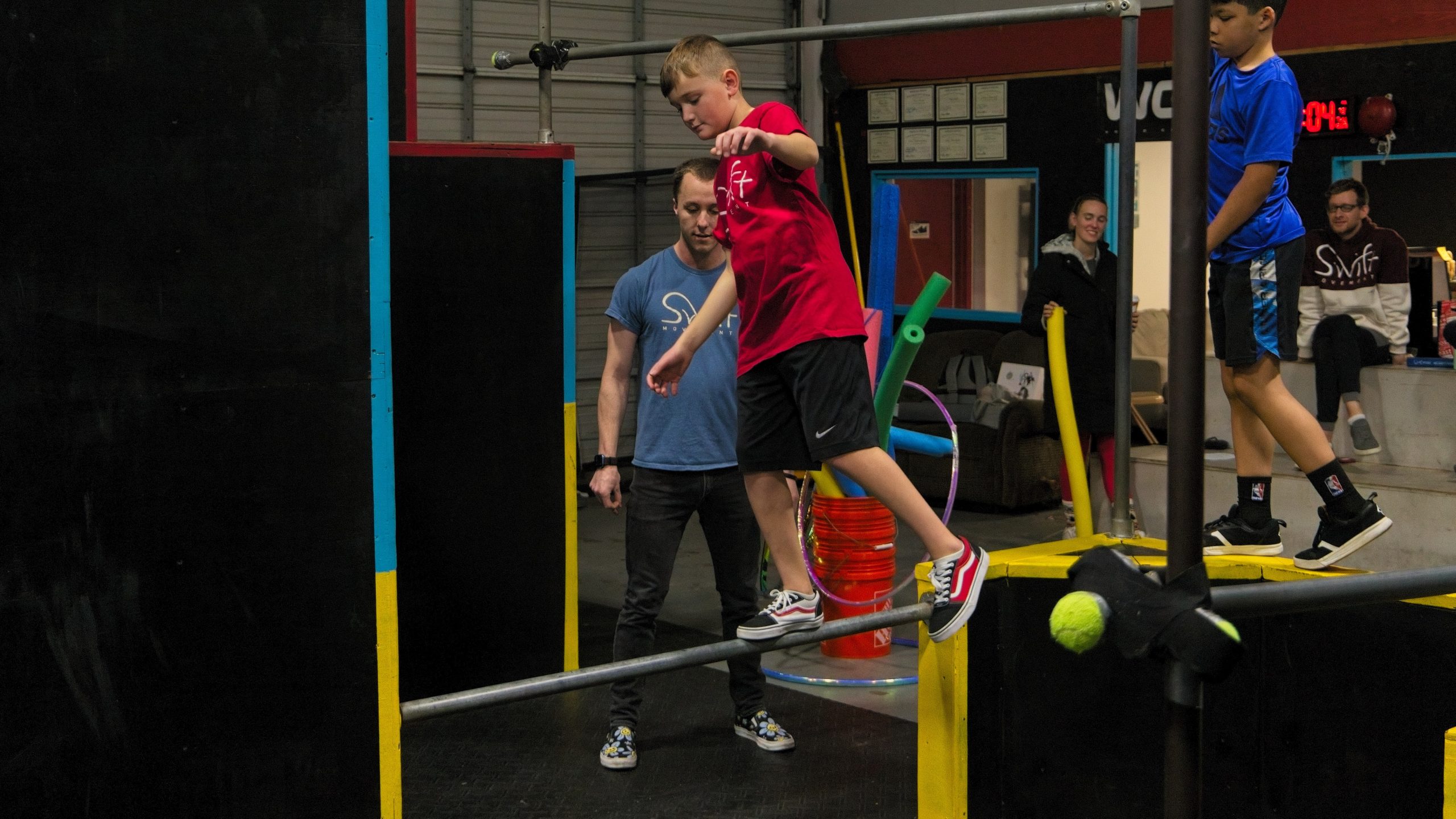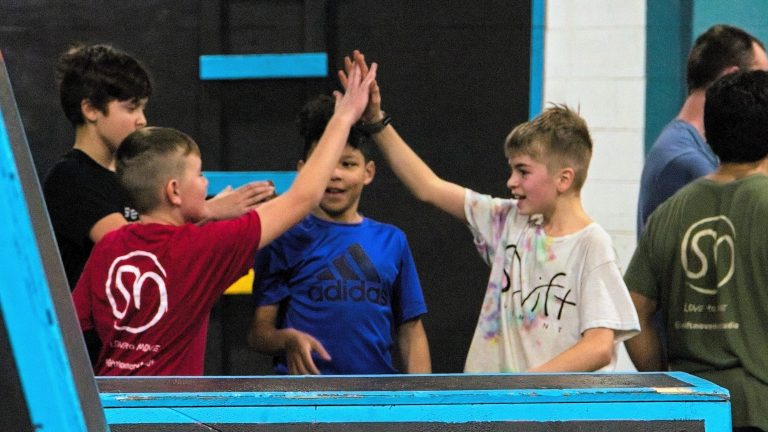At Swift Movement Studio, we’re concerned about making sure students are training sustainably while still making things fun. Our instructors and athletes have experience in cross discipline sports and have adopted similar training grindsets (grind-mindset) in order to determine what works for our students and athletes.
I see many young people who tend to have the Icarus archetype (the one who flew too close to the sun and his wings melted). Oh, if only Icarus would have known. Luckily we have science and physics and learned that training harder is not the same as training smarter. If we could will ourselves to fly, we would all be flying. So, guess what: we old birds have some wisdom to share.
To put it simply, the higher you are, the faster you fall. The faster you fall, the harder the impact. The skeleton has many very thin fibers (muscles/ligaments/tendons) holding it together and they can strengthen over time. Muscles can strengthen very quickly, but the other connective tissue mentioned take about 3-4 months to catch up/recover. This lag, along with skipping progressions, is what causes so many different injuries in sports. Ever strengthened your muscles, only to be taken out at the knees, ankles, wrists, shoulders, or back? Almost everyone’s been there (yes, even children). Most people’s lives are very sedentary (thanks technology) and many people have surprisingly limited mobility and motor function due to lack of use.
Here’s my solution:
First and foremost, students need a reminder to breath and hydrate before they do anything that involves parkour. The ones that hold their breath/refuse to quit/slow down will fade out and miss a step, it happens to the best of us. Sad news, we all need oxygen and hydration to keep from passing out, so drink up.
Find your student’s baseline (keep in mind current/prior injuries). A good example is a soft controlled frog landing with great form, from knee height and without pain. If knee height is too much, start them lower. For progression pace, I aim for approximately between one hand/foot length to the next target. Keep in mind, some students may want to progress beyond this path. This is okay as long as you warn the students of the potential risks involved and give them the right tools to navigate that path.
Make sure the drills and conditioning warm them up for the application portion. Try to keep drills short, about 8 mins, plus 2 mins for hydration. If their form suddenly becomes less coordinated, that can lead to some un-ideal forces on an unprepared body. We want to catch the warning signs ideally before the pain/injuries can begin. If their form starts to fall apart, have them count to ten and or take a short water break, then regress them back to where their form was good/without pain. Minor mistakes happen though- which is why we emphasize progress over perfection. It’s also okay to stop working on the skill for a little bit and come back to it later with a fresh body and mindset.
It’s important to not rush students and to challenge them in different ways from the level that they are at. If the only progression is higher, then we miss out on all the funky challenges in-between. That’s what mastery is all about. Music is a good example- if I only turn the volume up louder, does it make the song better? Or is it all the layers of sound being woven together in a fun and interesting way that give it life and meaning? Cranking the volume up with height should never be taken lightly as the consequences are heavy.
But Coach Tony, what about just using mats? We use foam mats to introduce students to heights slowly after ensuring the students have the basics down. However, we do not use a mat as a crutch for bad form. The body’s muscle memory has a tendency to remember exactly how you land, so make sure you’re practicing great form to keep bad habits from setting in. Start low, then work higher.
Again, working lower challenges will build the students confidence and help them grow strong without having to worry about getting injured so often. We want to encourage students to take one step forward at a time.
In addition to practicing progressions, study slow motion videos of great form and of poor form for all parkour moves and note the differences. Great athletes don’t just happen, they don’t take shortcuts just for a moment of glory. LeBron James is over 50 and still plays basketball. I have a friend back home, Petar Angov, who is over 40 who puts me to shame. The guys that train for 10+ years have a sustainable grindset. Believe me, Petar is a master of grinding. LeBron is a legend in his own right.
I’ve seen multiple generations of people turning away from parkour either because there wasn’t clear guidance on safe progressions, or the student gets bored from playing it safe. It breaks my heart. I have nearly dropped out myself from some injuries, and boredom, but luckily I have some good friends and resources along with years of trial and error to share this lesson. There is always something to work on and there is a safer way to work on fun/challenging moves.
Thanks for reading this far in! Hopefully this helps you in some way. We want to hear your thoughts and ideas and how you train sustainably, and be sure to share this with someone that you think this could help.
Much love,
Tony Fulk







